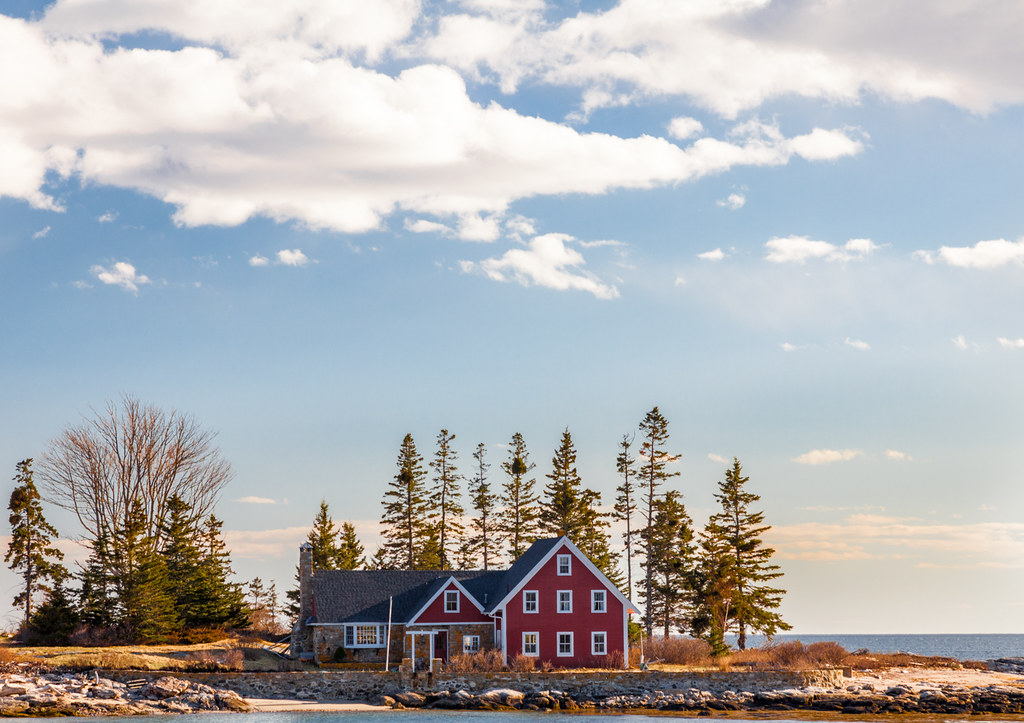Life on the Isolated Island
Just off the rugged coastline of Maine, nestled on a picturesque island, lies a tiny, eco-friendly house that has captured the hearts and imaginations of many. This charming abode represents the epitome of sustainable living, showcasing how one can minimize their environmental footprint while enjoying the breathtaking beauty that nature has to offer.
From the outside, this house may appear modest, measuring only a mere 400 square feet. However, what it lacks in size, it more than makes up for in ingenious design and functionality. The house is entirely self-sufficient, utilizing solar panels to generate electricity and rainwater collection systems for its water supply. Its construction materials were carefully chosen to be eco-friendly, ensuring minimal impact on the surrounding ecosystem.
Driving Sustainability Efforts
Sustainability is at the core of every aspect of this tiny house. The island it calls home is a protected area, abundant in diverse wildlife and fragile ecosystems. Recognizing the importance of preserving this natural paradise, the homeowners took great care in the construction and maintenance of their eco-sanctuary. The house was built using recycled materials, salvaged from local sources, reducing the need for new resources and minimizing waste. Every part of the design aimed to optimize energy efficiency, promoting renewable energy as a feasible alternative to traditional power sources.
An Escape to Serenity
Living in this tiny house is a unique opportunity to disconnect from the chaos of urban life and fully immerse oneself in the tranquility of nature. The island offers a pristine environment, unspoiled by the noise and pollution commonly encountered in city living. Surrounded by towering trees, breathtaking sunrises and sunsets, and the soothing sound of ocean waves, residents find solace and rejuvenation on a daily basis.
Embracing Minimalism
Choosing to reside in a tiny house requires a shift in perspective towards a more minimalist lifestyle. The limited space encourages residents to prioritize what truly matters to them. This intentional living allows individuals to let go of unnecessary possessions and focus on experiences and relationships instead. The intimate size of the house fosters a deep connection with the surrounding environment, creating a symbiotic relationship between humans and nature.
Sustaining Community Values
On this remote island, community spirit flourishes. Neighbors come together to support one another, sharing resources and knowledge. Whether it’s lending a hand on a construction project or exchanging gardening tips, the sense of camaraderie is palpable. Living in a tiny house fosters a strong sense of cooperation, as residents must rely on communal efforts to tackle challenges that may arise.
Inspiring Change Beyond the Coastline
This tiny, eco-friendly house is not just a testament to sustainable living on a secluded island; it serves as an inspiration for individuals and communities worldwide. As concerns about climate change and the depletion of natural resources grow, many people are seeking alternative ways of living that align with their values. The success of this tiny house offers a blueprint for others to follow, encouraging innovation and creativity in sustainable housing solutions.
Conclusion
As we reflect on the story of this tiny, eco-friendly house off the coast of Maine, it serves as a reminder of the power of individual choices. By embracing sustainability and minimalism, we can make a positive impact on our environment and lead fulfilling lives. From the scenic beauty of the island to the warmth of the tight-knit community, this house embodies a vision of a harmonious coexistence with nature. Let this be an inspiration to all who dream of living in alignment with the planet and the values that truly matter.



